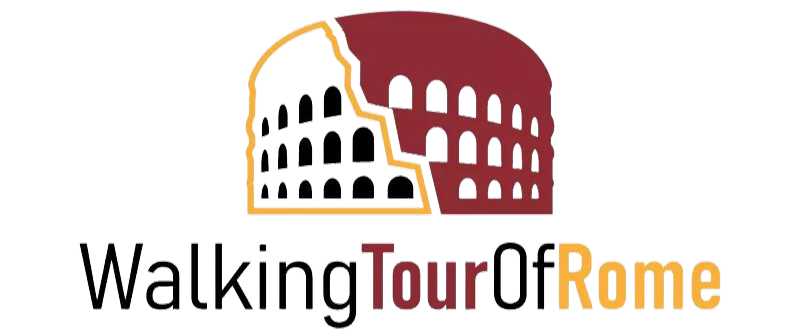Join us on a tour of the Vatican, the independent city-state located in the heart of Rome and home for the spiritual center of Christianity. Discover the less-known wonders of this fascinating place, including the Chapel of the Palliums with frescoes by Raphael, the giant bronze pine cone in the Courtyard of the Pine Cone, the frescoes maps in the Gallery of Maps, the Codex Vaticanus in the Vatican Apostolic Library, the bronze statue of St. Paul in the Courtyard of the Pine Cone, and the botanical gardens with over 4,000 plant species.

The Vatican Apostolic Library is a world-renowned research library located within the Vatican City in Rome. It is home to a vast collection of rare and important books, manuscripts, and other documents, including the famous Codex Vaticanus, one of the oldest manuscripts of the New Testament in Greek, dated around 325 AD. The Codex Vaticanus is an absolutely invaluable resource for scholars of religion, history, and literature, and is considered to be one of the most important manuscripts in the world. The Vatican Apostolic Library is also home to many other rare and important documents, including ancient manuscripts, early printed books, and modern works on a wide variety of subjects. Whether you’re a scholar, a historian, or simply someone who loves books, the Vatican Apostolic Library is sure to be a highlight of your visit to Rome. Its vast collection of rare and important works is a testament to the enduring power of knowledge and learning, and is sure to inspire and educate visitors of all ages.
In the Courtyard of the Pine Cone, there is also a bronze statue of St. Paul, which was made by the sculptor Gian Lorenzo Bernini, in addition to the famous bronze pine cone that stands at its center, the courtyard. It depicts St. Paul in a dynamic pose, with his arms outstretched and his face filled with emotion. The bronze statue is a testament to Bernini’s skill as a sculptor, and is sure to be a highlight for any art lover visiting the Vatican. Whether you’re a fan of Bernini’s work or simply appreciate beautiful art, the Courtyard of the Pine Cone is a must-see destination in Rome.
The Vatican City, located in the heart of Rome, is home to a stunning array of cultural and historical treasures, including beautiful botanical gardens. These gardens, which are located within the walls of the Vatican, are home to over 4,000 different plant species, including many rare and valuable specimens. The gardens are a true paradise for plant lovers and nature enthusiasts, and provide a peaceful and serene escape from the hustle and bustle of the city. Visitors can stroll through the gardens and admire the wide variety of flowers, trees, and other plants that are on display. The gardens are also home to a number of rare and exotic plants, including many species that are not found anywhere else in the world. Whether you’re a seasoned botanist or simply someone who enjoys the beauty of nature, the Vatican’s botanical gardens are sure to be a highlight of your visit to Rome.
The Chapel of the Palliums is a small, secluded room located within the famous Sistine Chapel in Rome. It is known for its beautiful frescoes, which were painted by the famous artist Raphael. Despite its beauty, the Chapel of the Palliums is often overlooked by tourists, who tend to focus on the more well-known Michelangelo frescoes located elsewhere in the Sistine Chapel. The chapel is decorated with a series of frescoes depicting various religious scenes and figures, including Christ, the Virgin Mary, and various saints. These frescoes are considered to be some of Raphael’s finest works, and are a testament to his skill as an artist. Despite its relative obscurity, the Chapel of the Palliums is a must-see for any art lover visiting Rome, and is a testament to the wealth of artistic talent that the city has to offer.
In the Courtyard of the Pine Cone, there is a giant bronze pine cone that was transported from the Temple of Apollo at Delphi in Greece in 380 BC. The pine cone is an ancient symbol of fertility and renewal, and was often used in Greek and Roman art and architecture. The bronze pine cone is a magnificent work of art, and is considered to be one of the finest examples of ancient Greek sculpture. The pine cone has been carefully restored and preserved over the centuries, and stands today as a testament to the enduring beauty and power of ancient art. Visitors to the Vatican can enjoy the peaceful atmosphere of the Courtyard of the Pine Cone.
In the Gallery of Maps, located in the Vatican palaces, you can admire 40 frescoes, representing the cartography of the known world at the time of Pope Gregory XIII in 1580. These frescoes are considered to be some of the finest examples of Renaissance art in existence, and are a testament to the skill and talent of the artists who created them. The Gallery of Maps is an absolute must-see for any art lover visiting Rome, and is a testament to the wealth of artistic talent that the city has to offer. The frescoes are incredibly detailed and beautiful, and depict a wide variety of scenes from all around the world. From majestic mountain ranges and sprawling cities to lush forests and beautiful beaches, the Gallery of Maps has something for everyone. Whether you’re a history buff, an art lover, or just someone who appreciates beauty, the Gallery of Maps is sure to be a highlight of your trip to Rome.


